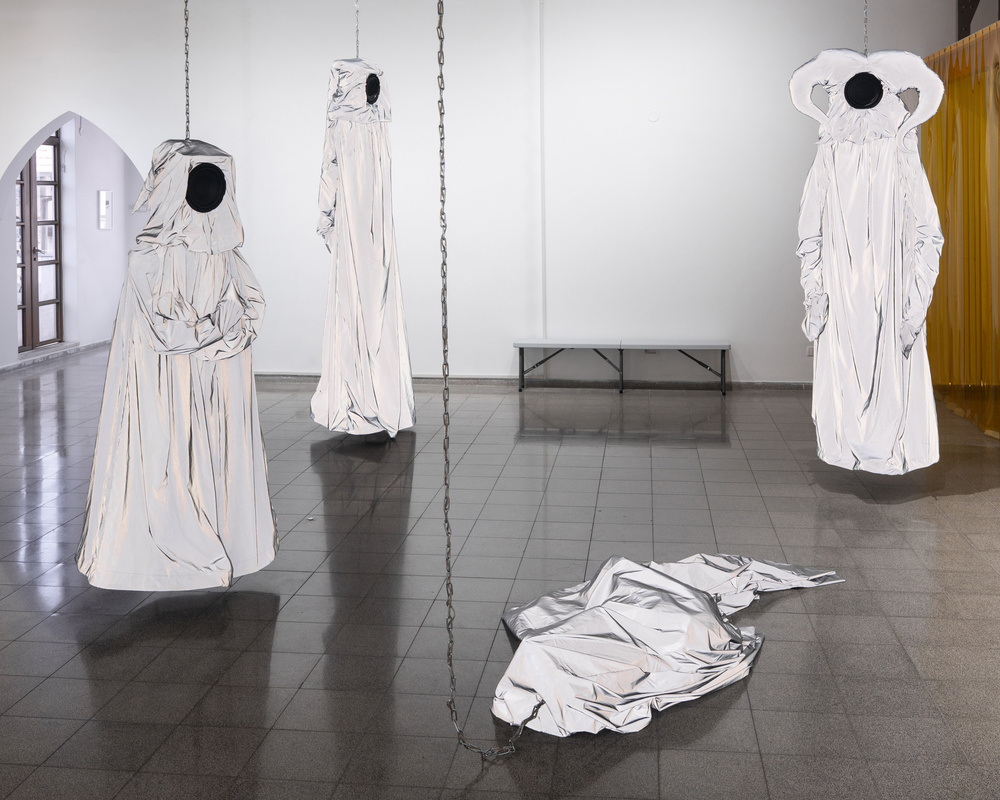Orpheus / Uri Weinstein
Nachum Gutman Museum of Art, Tel Aviv
Curator: Monica Lavi
Original Music: Avshalom Hasfari
Imagery by Maya Erlich
Installation views by Tomer Fruchter
![]()
At the heart of the exhibition, the sculptural installation unfolds through five sound pieces, each composed from sampled and processed human voices. These sonic fragments trace the five stages of grief articulated by Elisabeth Kübler-Ross: denial, anger, bargaining, depression, and acceptance. Rather than forming a linear or narrative progression, the sounds emerge as states of affect: shards of denial surface as fractured, hesitant beats, resisting acknowledgment of death; they give way to sharp bursts of anger; then to cyclical patterns of bargaining, echoing a plea that returns obsessively; followed by a slow descent into the weighted resonance of depression.
The final stage, acceptance, assumes a pivotal role. Here it is not rendered as dissolution or passive resignation, but as a charged moment of active recognition: the instant in which Orpheus, having traversed all stages of grief, turns to look back at Eurydice despite the fatal condition placed upon him. That glance becomes at once rupture and reconciliation an unflinching recognition that the beloved cannot return, coupled with a profound embrace of finitude. In this gesture, grief does not vanish but integrates into the very fabric of identity and memory.
![]()
![]()
In this way, sculptural sonic environment transcends the mere delineation of psychological stages. It offers a journey toward the threshold where death ceases to appear as an adversary to resist and instead becomes a presence one must learn to carry. Acceptance emerges not as an end but as a passage, akin to the myth itself: an opening into another dimension of existence memory.
![]()
![]()
![]()
![]()
